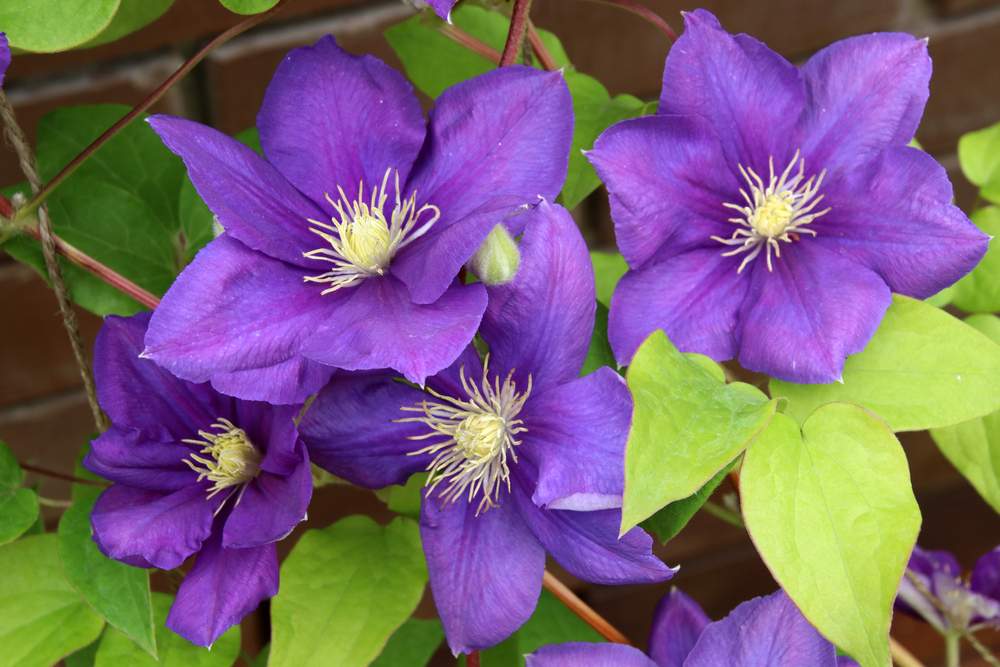
Clematis x jackmanii Kertlap Kertészeti Magazin & Kertészeti Tanfolyamok
Clematis 'Jackmanii' is a Clematis cultivar which, when it was introduced in 1862, was the first of the modern large-flowered hybrid clematises of gardens. It is a climber with large violet-purple blooms, still among the most familiar climbers seen in gardens. It was produced from crosses made by the prominent nurseryman George Jackman (1837.
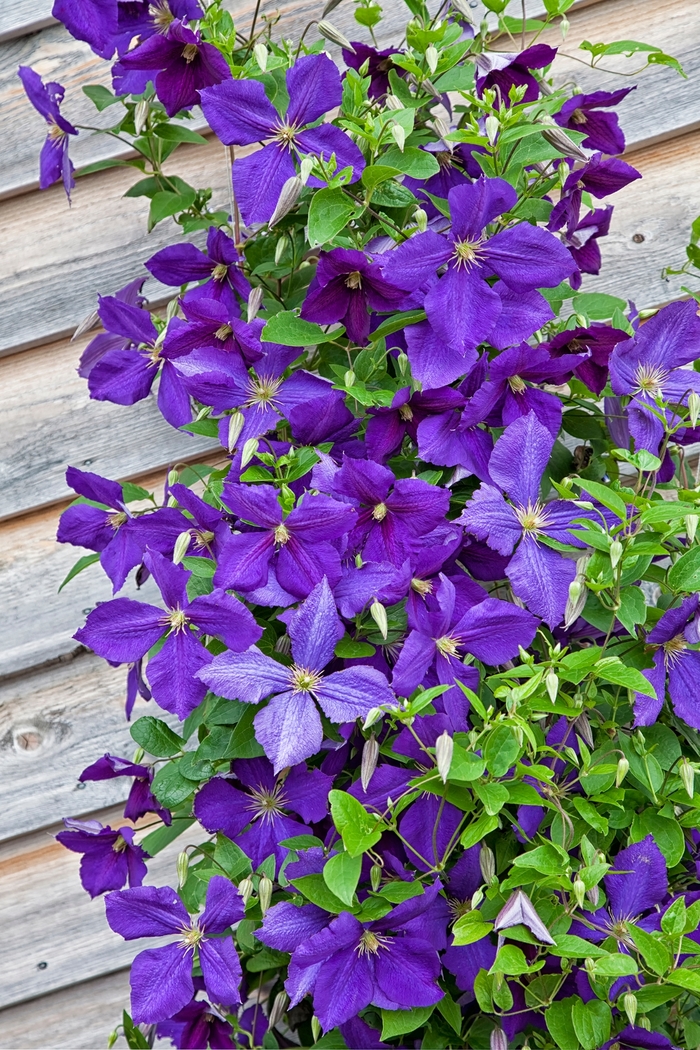
Clematis x 'Jackmanii' Clematis Gateway Garden Center
The most popular and reliable of the clematis vines. Showy deep purple-violet flowers cover this climbing vine throughout most of the summer. An excellent vine for adding vertical interest to the landscape on a fence or trellis, or along rock walls. Deciduous. Water deeply when top inch of soil is dry.
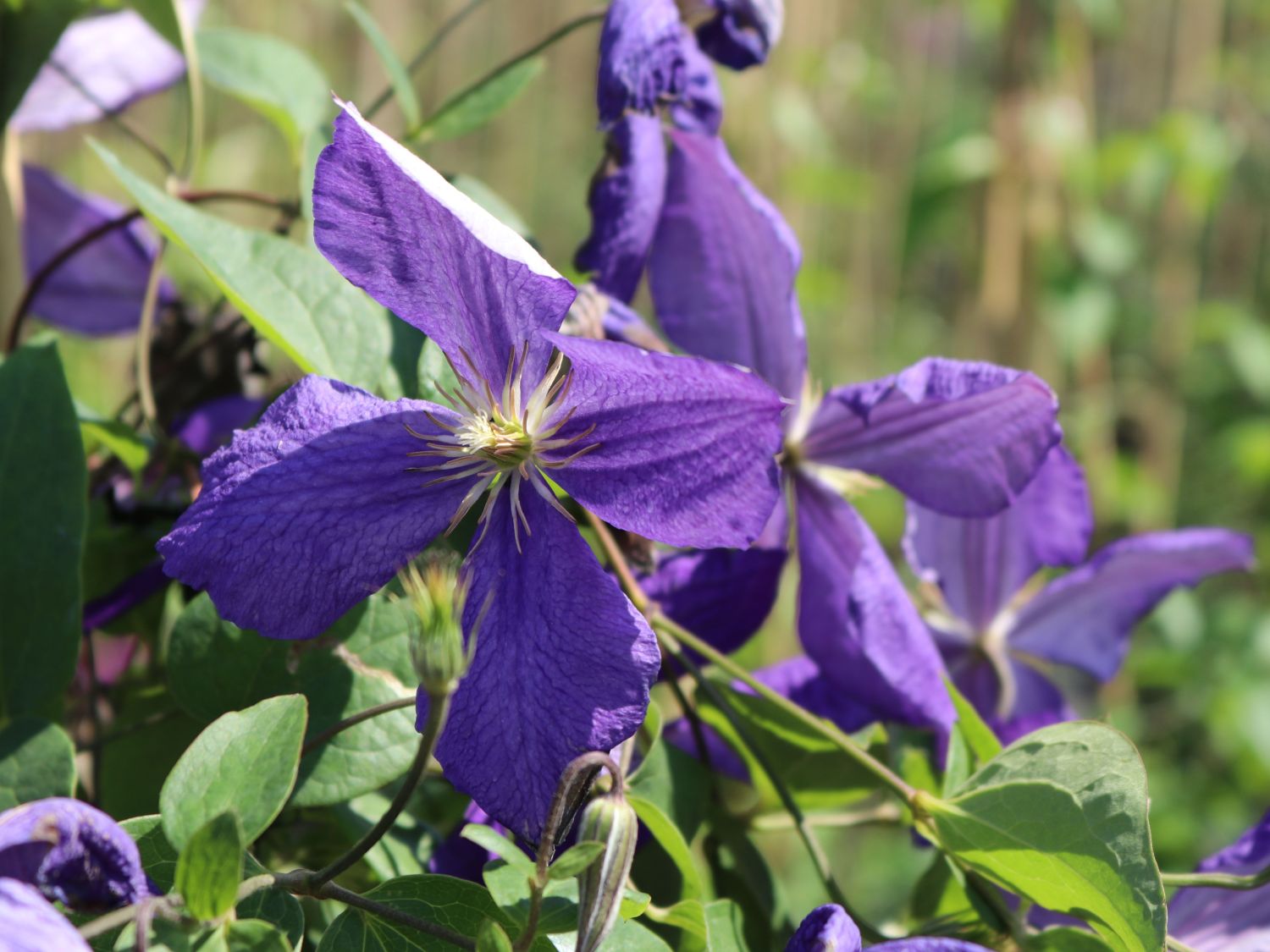
Clematis Jackmanii Clematis x jackmanii Baumschule Horstmann
Jackmanii was the first of the modern hybrid large-flowered clematis to be grown in gardens and it continues to be very popular today. Many sources list it as hardy to zone 4, but in a more protected location it has been known to be hardy to zone 3. Since it gets so large, a sturdy support or trellis will be needed.
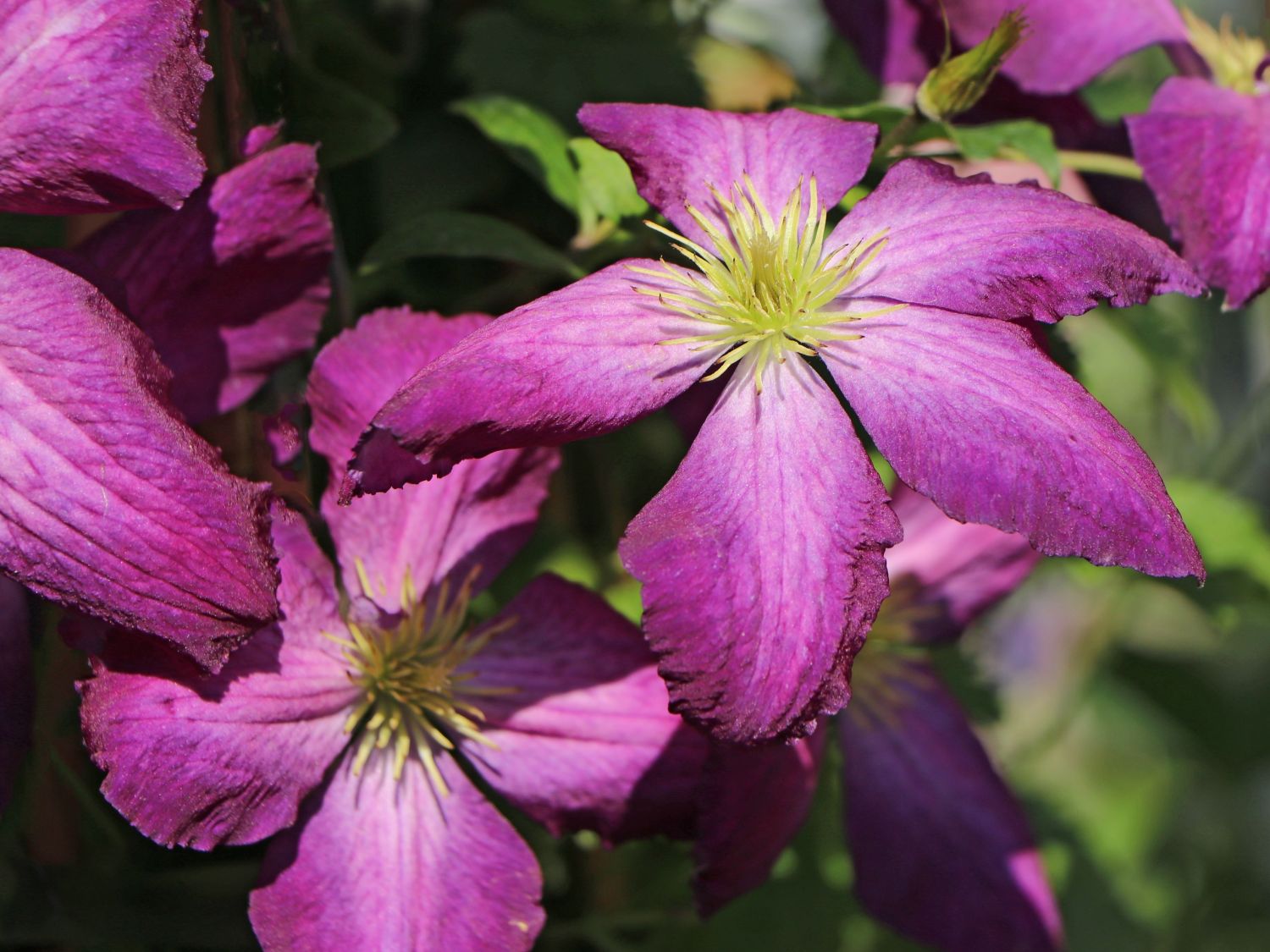
Clematis Jackmanii 'Purpurea' Clematis x jackmanii 'Purpurea
Clematis 'Jackmanii' is a fast growing broadleaf deciduous perennial vine with green foliage and purple flowers in summer. It can grow 3 FT - 6 FT - wide, 7 FT - 10 FT - tall. Deer resistant. To grow well, it prefers sun - mostly sun and even moisture - regular water. Grows best in well-drained, rich and average soil. #trellis, #big flowers Plant family: #Ranunculaceae USDA Zone: zone 4a - 9b
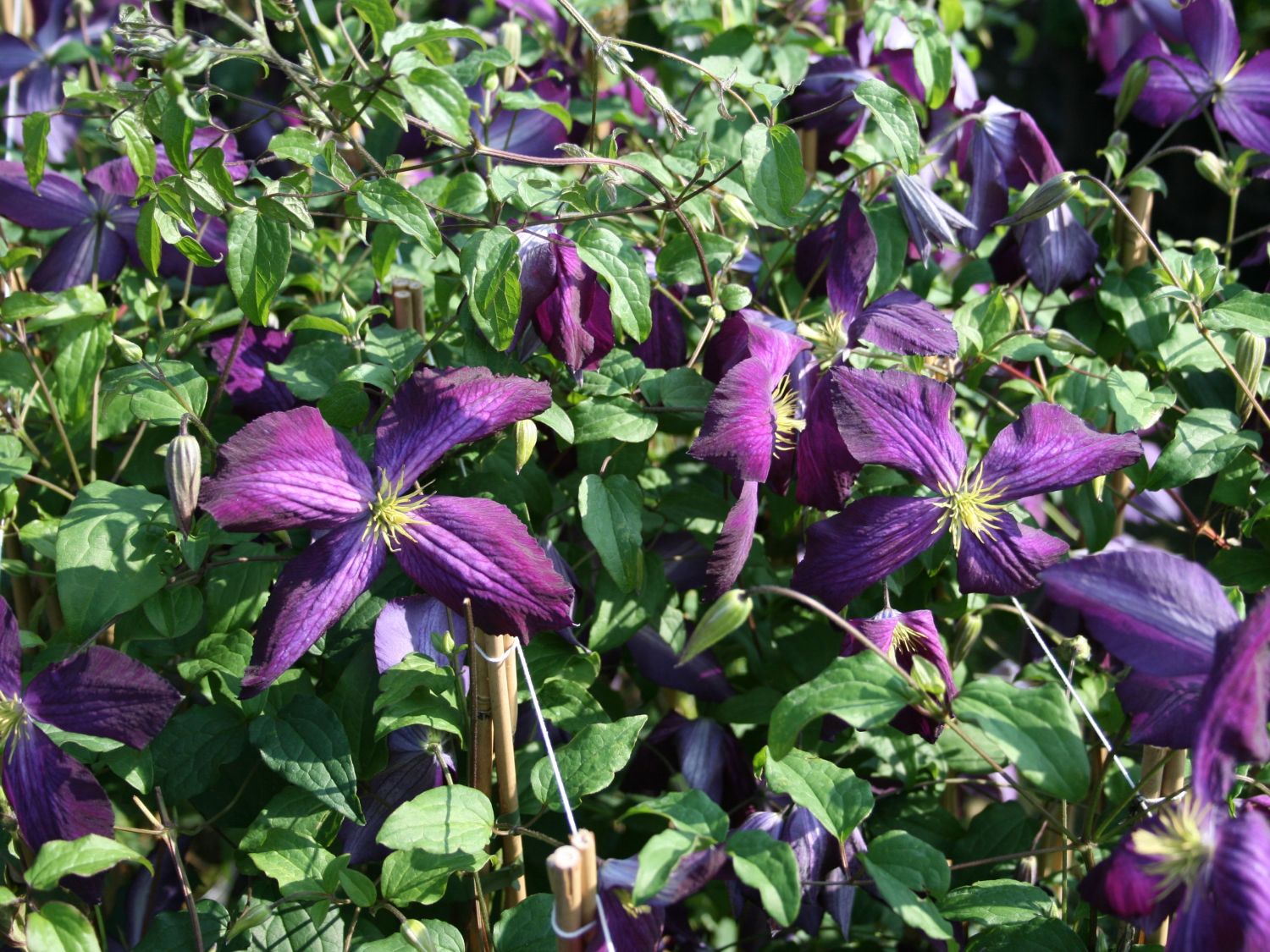
Clematis Jackmanii Clematis x jackmanii Baumschule Horstmann
Similar to the original C. × jackmanii but with broader sepals of a more reddish purple, rich maroon when the flowers first expand. A very vigorous and beautiful clematis. It is of interest that 'Madame Grangé', raised in France before 1877, and bearing some resemblance to 'Superba', is known to have been a direct cross between C. lanuginosa and C. viticella.
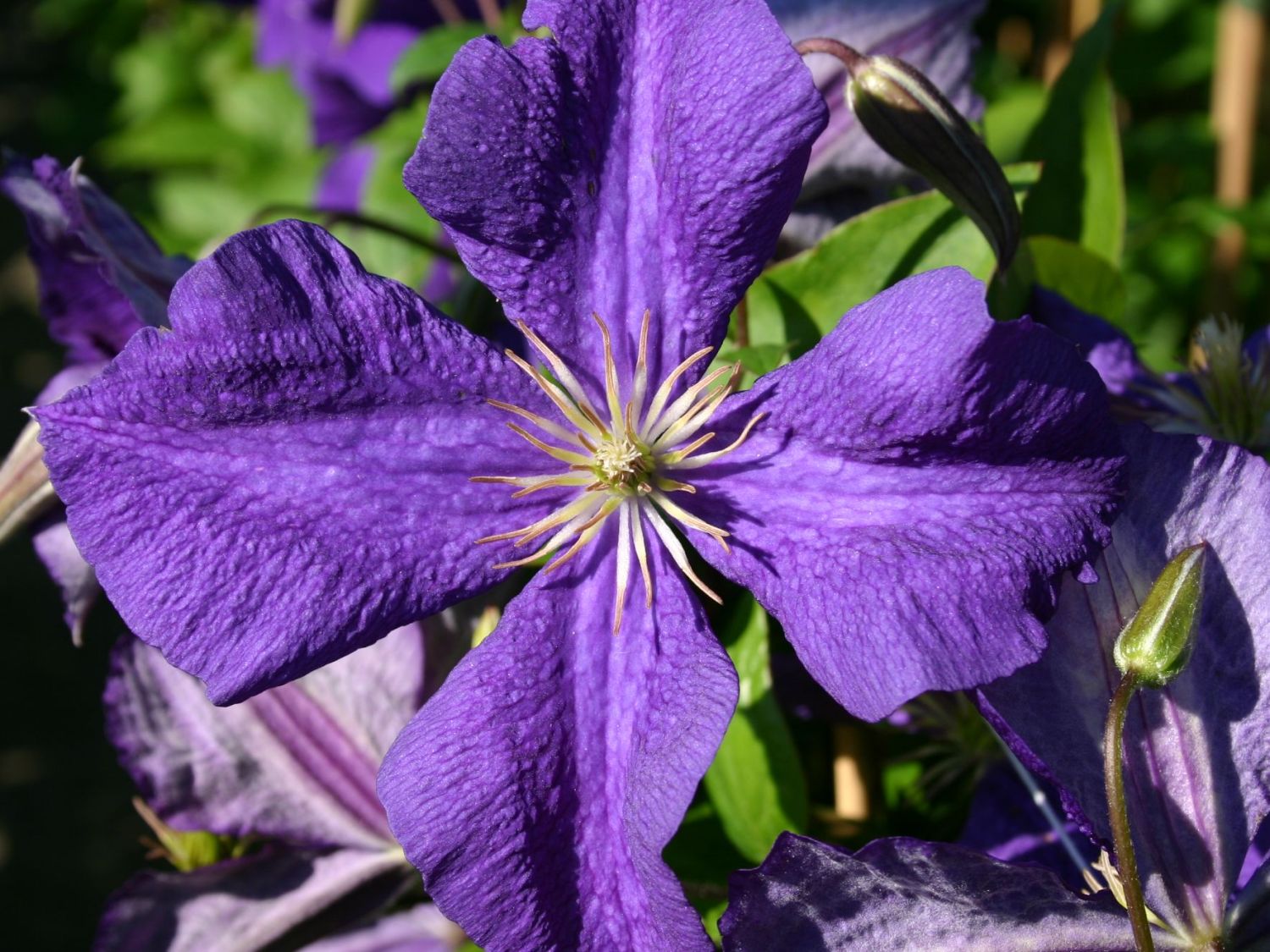
Clematis Jackmanii Clematis x jackmanii Baumschule Horstmann
Clematis x jackmanii flower detail Jeff Coffman CC BY 2.0 Clematis x jackmanii climbing InAweofGod'sCreation CC BY-ND 2.0 leaves and flowers Hardyplants CC0 leaves and flowers Scott Feldstein CC BY 2.0 Clematis x Jackmanii - half of plant in bloom Jim Lawrence CC BY-NC-ND 4.0 Flower Form (Stowe Botanical Garden, NC) Jim Robbins CC BY-NC-ND 4.0.

Clematis Jackmanii Easy To Grow Bulbs
Flowers of Viticella group varieties reach from 8 to 12 cm in diameter, Jackmanii group-10-15 cm, and in some varieties - up to 20 cm. The beauty of these clematis is that they bloom profusely and long in summer (and varieties of the Jackmanii group-and in September) on the shoots of the current year and belong to the third group of pruning.
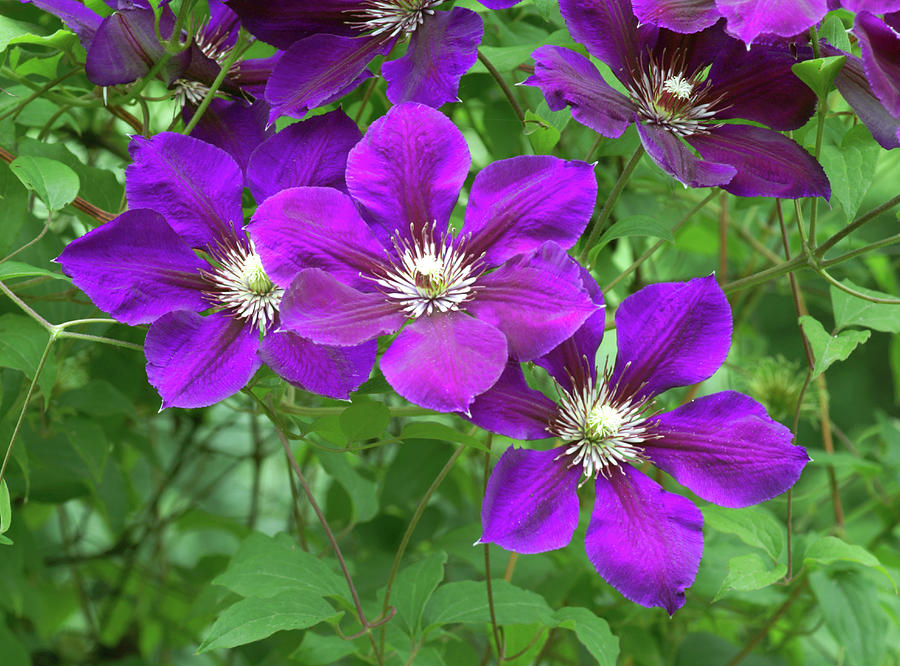
Clematis X Jackmanii 'superba' Photograph by Brian Gadsby/science Photo
The RHS International Clematis Register and Checklist 2002 informs us that C. 'Jackmanii' was a seedling of a cross between C. lanuginosa and C. 'Atrorubens', which Magnus Johnson agreed with.However the late Dr John Howells believed after considerable research that it was C. × diversifolia 'Hendersonii'.. When C. 'Jackmanii' first appeared it became very popular and C.

Clematis x jackmanii Name That Plant
In the rainy season, increase the gap between watering to prevent root rot. In addition to watering, thick root mulch will be helpful in keeping the soil moist. Feed clematis during the growing season which lasts from April until late August (early fall) with a general-purpose fertilizer in 10-10-10 NPK ratio.
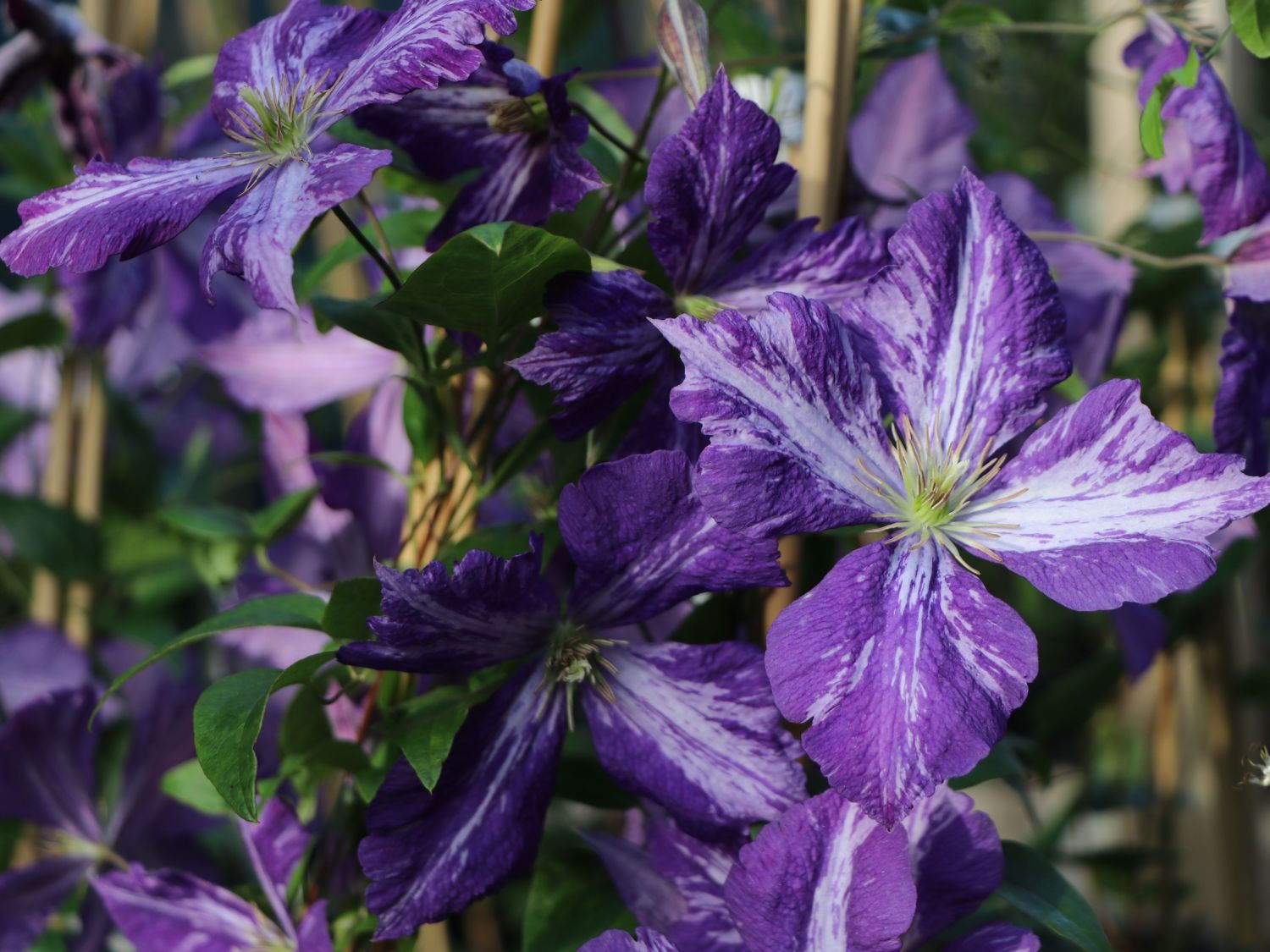
Clematis Jackmanii 'Tie Dye' Clematis x jackmanii 'Tie Dye
Jackmanii clematis vine will grow best in an area where the top portion of the plant will receive full sun, and the bottom portion and root zone will be shaded. You can keep the root zone cool by shading it with other perennial plants nearby, or by adding mulch to the flower bed. Jackmanii clematis care also requires that its vines are provided.
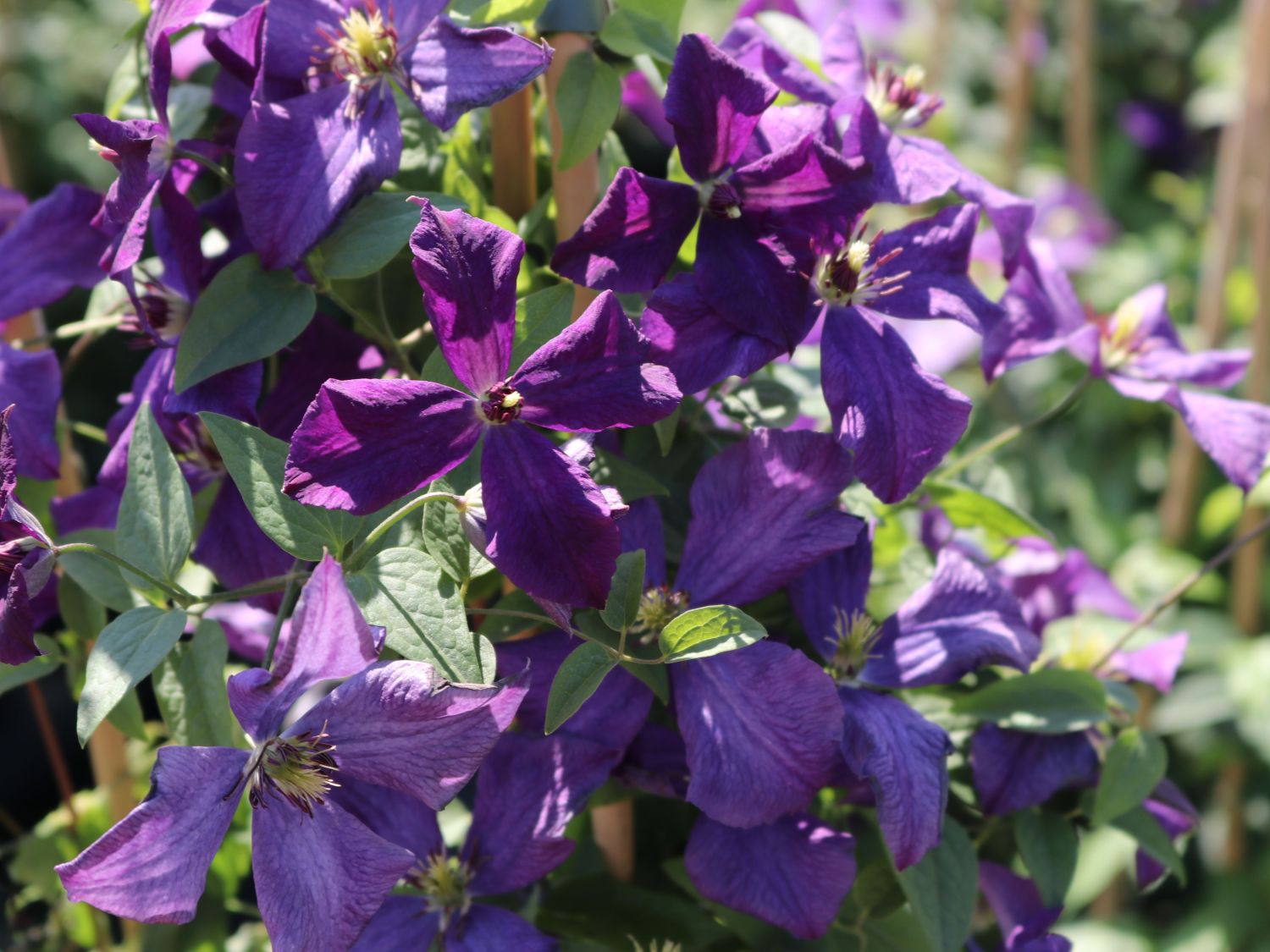
Clematis Jackmanii Clematis x jackmanii Baumschule Horstmann
Genus name comes from the Greek word klematis which is an old name applied to climbing plants. 'Jackmanii' is a hybrid clematis cultivar resulting from a cross between C. lanuginosa and C. viticella. A profuse bloomer with 5-7" wide, open, four-sepaled (occasionally 5 or 6), violet-purple flowers covering this vine in mid to late summer.

Clematis x jackmanii (Jackman's Clematis) North Carolina Extension
Jackmanii clematis is a hybrid clematis, a cross between two species plants, clematis lanuginosa x Clematis viticella. It is a deciduous perennial flowering vine, and will return to bloom year after year. Jackmanii clematis hardiness zone. This clematis is hardy from zones 4 through 9. Jackmanii Clematis Care

Clematis x jackmanii (Jackman's Clematis) North Carolina Extension
Clematis 'Jackmanii' will need at least 6 hours a day of sunlight. Clematis 'Jackmanii' needs full sun to part shade. It will bloom best in a location that gets at least 6 hours of bright sunlight each day. You can plant it somewhere with afternoon shade, as long as it gets its minimum sunlight.
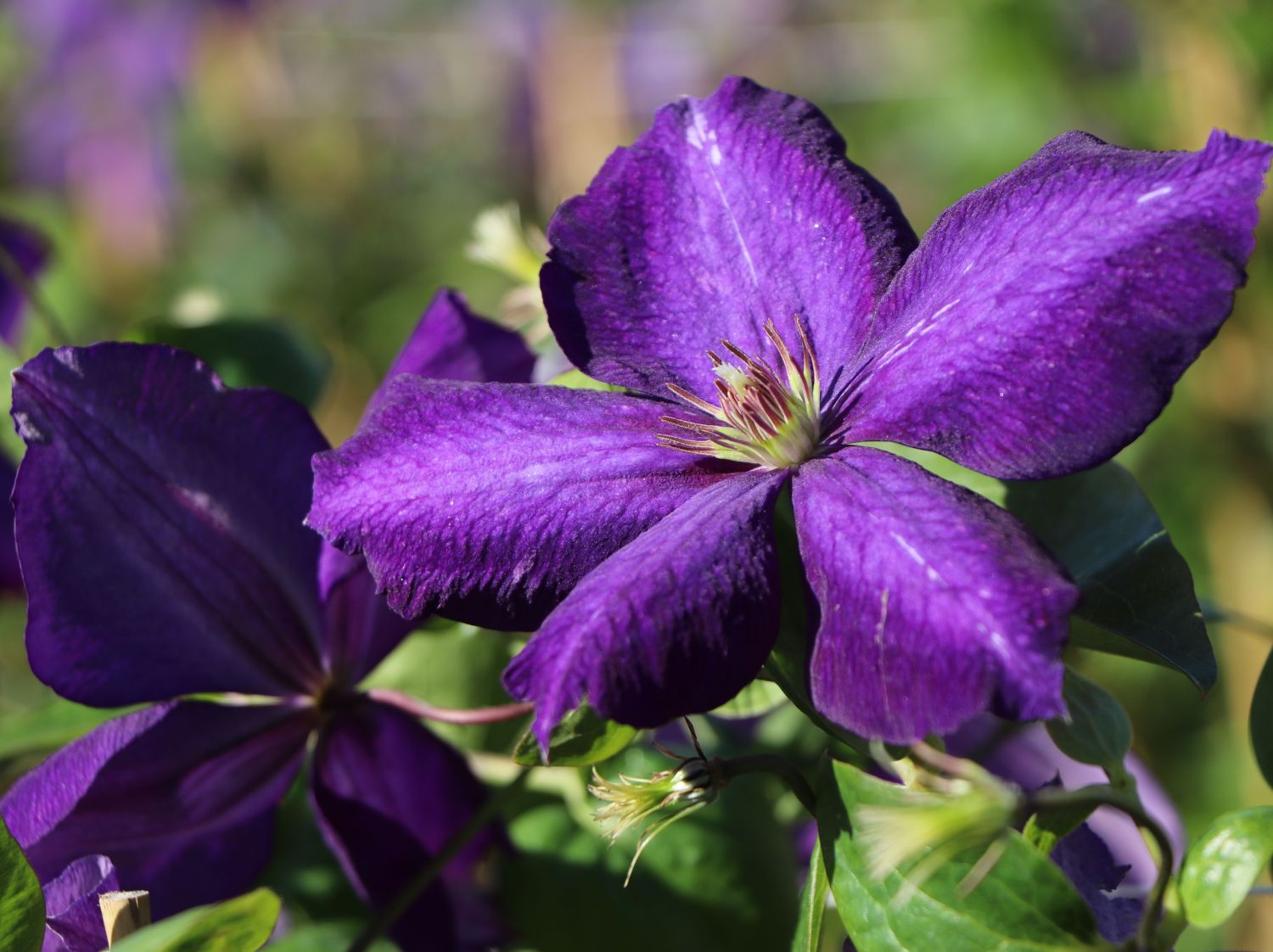
Clematis Jackmanii 'Superba' Clematis x jackmanii 'Superba
A garden classic, popular since the 1800s, Clematis 'Jackmanii' is a showy, perennial, large-flowered clematis offering early to late summer interest. Long-blooming and free-flowering, the plant sets masses of violet-purple flowers with a frilly center of cream-colored anthers. The single, 5- to 7-inch flowers typically have 4 petals but.
Clematis Jackmanii 'Purpurea' Clematis x jackmanii 'Purpurea
Jackman's Clematis, Large-Flowered Clematis, Clematis x Jackmanii . Among the most popular and easy to grow, Clematis 'Jackmanii' is a lovely deciduous vine that gets covered with a profusion of velvety dark purple flowers, fading to violet over time and harmoniously contrasting with the greenish-cream anthers. The 4-petaled blossoms are.
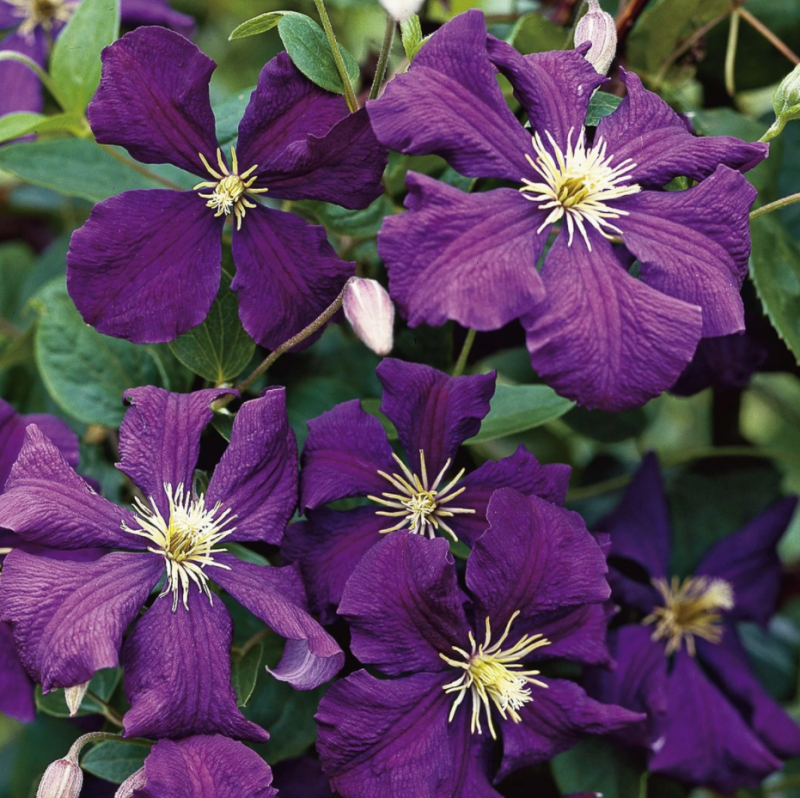
Clematis x jackmanii ‘Superba’ Lambley Nursery
Cultivation. Plant in a moisture-retentive, well-drained soil, with the roots and base of the plant kept cool and shaded by other plants or a layer of pebbles at the base. Plant with the crown 5-8cm (2-3in) deep to encourage new shoots to grow from below ground level. See clematis cultivation for more advice.